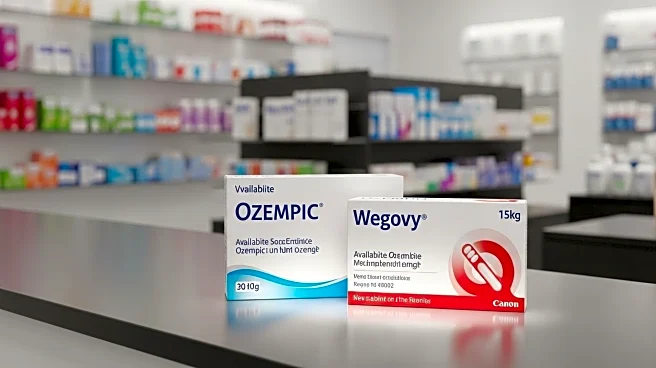What is the story about?
What's Happening?
The food industry is adapting to the rise of GLP-1 drugs, such as Ozempic and Wegovy, which are known to suppress junk food cravings. Despite this, the demand for sweet foods remains, as consumers continue to seek comforting flavors like strawberry and chocolate. Ingredient suppliers are investing in sugar reduction technologies, such as enzymes that convert sugar into prebiotic fiber, to meet the evolving needs of consumers. The market is seeing a shift towards non-artificially sweetened products, with a growing number of sweetened and non-sweetened options available.
Why It's Important?
The continued demand for sweet foods, even among GLP-1 users, highlights the importance of sugar reduction technologies in the food industry. Companies that develop nutrient-dense, sugar-reduced products stand to benefit as consumers seek healthier options. This trend underscores the need for food manufacturers to innovate and adapt to changing consumer preferences, ensuring they meet the demand for sweetness while providing better nutrition. The evolution of sugar reduction technologies is crucial for maintaining market relevance and addressing public health concerns related to sugar consumption.
What's Next?
As the market for sugar reduction technologies evolves, food manufacturers are likely to focus on developing products that cater to the diverse needs of consumers, including those on GLP-1 drugs. The industry may see an increase in research and development efforts to create innovative solutions that balance sweetness with nutritional benefits. Additionally, the rise of non-artificially sweetened products suggests a potential shift in consumer preferences, prompting companies to explore natural sweeteners and other alternatives.
Beyond the Headlines
The rise of GLP-1 drugs and the ongoing demand for sweet foods may lead to broader discussions about the role of sugar in the diet and its impact on health. This could influence public policy and regulatory measures aimed at reducing sugar consumption. Furthermore, the development of new sugar reduction technologies may drive ethical considerations regarding food labeling and consumer transparency.
AI Generated Content
Do you find this article useful?













